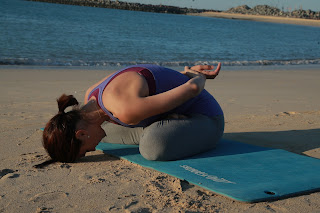yoga classes mumbai
Hypotension is defined as abnormally low blood pressure. Normal blood pressure in adults is less than 120/80 mmHg. Hypotension is defined as blood pressure lower than 90/60 mmHg by the medical fraternity.
Basically when your blood pressure falls, there is insufficient supply of blood and oxygen to the organs. Blood pressure lowers as you sleep and rises again upon waking up. People who exercise regularly tend to have blood pressure towards the lower end which is completely normal. Hypotension is a medical concern only if it causes symptoms or is linked to a serious condition, such as heart disease. The various conditions that may lead to hypotension include blood loss during injury, impaired circulation, weakness, dehydration, endocrine disorders (diabetes, adrenal insufficiency or thyroid issues) etc. Symptoms include dizziness, fainting, cold and sweaty skin, fatigue (tiredness), blurred vision, or nausea (feeling sick to your stomach). In extreme cases, hypotension can lead to shock. Certain yogic practices are helpful in managing hypotension.
Vipareeta Karani Asana (inverted pose)
Lie flat on the back with the legs and feet together in a straight line. Place the hands and arms close to the body with the palms facing down. Relax the whole body.
Raise both legs, keeping them straight and together. Move the legs over the body towards the head as you push down on the arms and hands, raising the buttocks. Roll the spine from the floor, taking the legs further over the head.
Let the top of the hips rest on the palms. The hands cup the hips and support the weight of the body. Keep the elbows as close to each other as possible. Raise both the legs to the vertical position and relax the feet.
In the final position, the weight of the body rests on the shoulders, neck and elbows, the trunk is at a 45 degree angle to the floor and the legs are vertical.
To return to the starting position, lower the legs as you bend your knees and lower the spine and hip. Slowly let go of support and bring the hands next to the hip. Finally stretch the legs out straight. Relax the body in shavasana (corpse pose).
NOTE:
Beginners should practice for a few seconds only, gradually increasing the time over a period of 4-6 weeks to an optimum of 2 minutes.
Breathing: Inhale while in the lying position. Retain the breath inside while assuming the final pose. In the final posture, breathe normally. Retain the breath inside while lowering the body to the floor.
This posture should not be practiced by people suffering from enlarged thyroid, liver or spleen, cervical spondylitis, slipped disc, high blood pressure or other heart ailments, weak blood vessels in the eyes, thrombosis or impure blood. It should be avoided during menstruation and advanced stages of pregnancy.
It is advisable to learn this posture under the guidance of a professional before practicing on your own.


